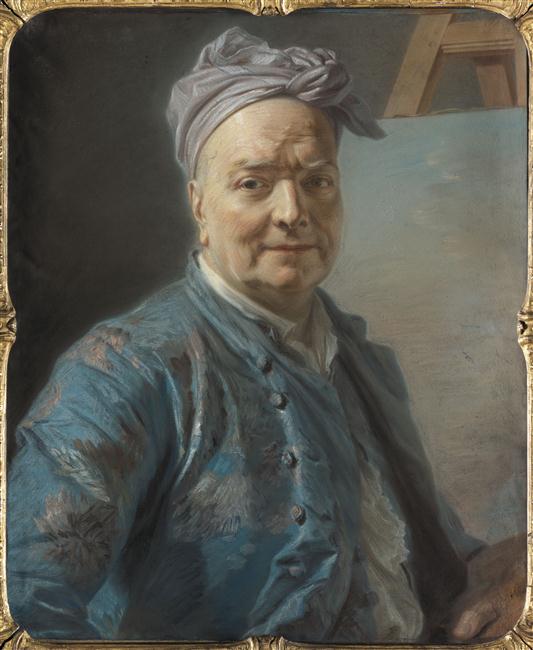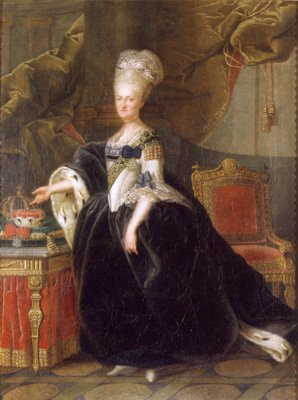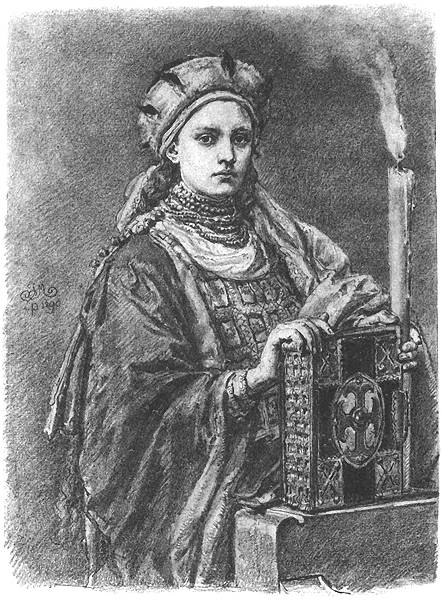|
Maria Josepha
Maria Josepha of Austria (Maria Josepha Benedikta Antonia Theresia Xaveria Philippine, pl, Maria Józefa; 8 December 1699 – 17 November 1757) was the Queen of Poland and Electress of Saxony by marriage to Augustus III. From 1711 to 1717, she was heir presumptive to the Habsburg Empire. Her sister Maria Amalia became Electress of Bavaria. Family Maria Josepha was born in Vienna, an Archduchess of Austria, the eldest child of Joseph I, Holy Roman Emperor and Princess Wilhelmina Amalia of Brunswick-Lüneburg. She was named for her father. During the reign of her grandfather, Maria Josepha's father and uncle signed the Mutual Pact of Succession of 1703, which was issued by her grandfather, Emperor Leopold I, and effectively made Maria Josepha the heiress presumptive to her uncle, Emperor Charles VI; However, Charles VI's Pragmatic Sanction of 1713 annulled the earlier agreement and made his daughter Maria Theresa his successor instead of Maria Josepha. Marriage A marriage ... [...More Info...] [...Related Items...] OR: [Wikipedia] [Google] [Baidu] |
Louis De Silvestre
Louis de Silvestre (23 June 1675 – 11 April 1760) was a French portrait and history painter. He was court painter to King Augustus II of Poland, and director of the Royal Academy of Arts in Dresden. Life and work Sylvestre was born in Sceaux, south of Paris, the third son of Israel Silvestre, the notable engraver and drawing-master to the Grand Dauphin himself. Louis was taught initially by his father, then trained under Charles Le Brun and Bon Boullogne; he completed his studies in Rome, where he met Carlo Maratta, whose work had a great influence on him.Louis-Étienne Dussieux, Les Artistes français à l’étranger' (Paris; Lyon, Jacques Lecoffre, 1876) pp. 86-88. After his return to Paris, Sylvester entered the Académie de peinture et de sculpture in 1702 and was appointed professor in 1706. The main works he painted at this time were ''The Healing of the paralytic at the door of the Temple'' (1703) and the portrait of Louis XV (1715). Friedrich August II, the p ... [...More Info...] [...Related Items...] OR: [Wikipedia] [Google] [Baidu] |
Maria Kunigunde Of Saxony
Maria Kunigunde of Saxony (Maria Kunigunde Dorothea Hedwig Franziska Xaveria Florentina; 10 November 1740 in Warsaw – 8 April 1826 in Dresden) was Princess-Abbess of Essen and Thorn. She was a titular Princess of Poland, Lithuania and Saxony of the Albertine branch of the House of Wettin. She was a member of the Order of the Starry Cross and a collegiate lady in the abbey at Münsterbilzen. Life Youth She was the sixteenth and youngest child of King Augustus III of Poland (1696-1763), who was also Elector of Saxony as Frederick August II, and his wife Maria Josepha of Austria. Her father liked hunting, often went to the opera, kept an extensive art collection, and showed a great sense of family. However, he neglected his daily government duties and left them to his first ministers Count Heinrich von Brühl and Count Aleksander Józef Sułkowski. Her parents placed great emphasis on the education of all their children. Maria Kunigunde was taught Polish, Latin, French ... [...More Info...] [...Related Items...] OR: [Wikipedia] [Google] [Baidu] |
Habsburg Monarchy
The Habsburg monarchy (german: Habsburgermonarchie, ), also known as the Danubian monarchy (german: Donaumonarchie, ), or Habsburg Empire (german: Habsburgerreich, ), was the collection of empires, kingdoms, duchies, counties and other polities that were ruled by the House of Habsburg, especially the dynasty's Austrian branch. The history of the Habsburg monarchy can be traced back to the election of Rudolf I as King of Germany in 1273 and his acquisition of the Duchy of Austria for the Habsburg in 1282. In 1482, Maximilian I acquired the Netherlands through marriage. Both realms passed to his grandson and successor, Charles V, who also inherited the Spanish throne and its colonial possessions, and thus came to rule the Habsburg empire at its greatest territorial extent. The abdication of Charles V in 1556 led to a division within the dynasty between his son Philip II of Spain and his brother Ferdinand I, who had served as his lieutenant and the elected king of Hungary and ... [...More Info...] [...Related Items...] OR: [Wikipedia] [Google] [Baidu] |
Heir Presumptive
An heir presumptive is the person entitled to inherit a throne, peerage, or other hereditary honour, but whose position can be displaced by the birth of an heir apparent or a new heir presumptive with a better claim to the position in question. Overview Depending on the rules of the monarchy, the heir presumptive might be the daughter of a monarch if males take preference over females and the monarch has no sons, or the senior member of a collateral line if the monarch is childless or the monarch's direct descendants cannot inherit (either because they are daughters and females are completely barred from inheriting, because the monarch's children are illegitimate, or because of some other legal disqualification, such as being descended from the monarch through a morganatic line or the descendant's refusal or inability to adopt a religion the monarch is required to profess). The subsequent birth of a legitimate child to the monarch may displace the former heir presumptive b ... [...More Info...] [...Related Items...] OR: [Wikipedia] [Google] [Baidu] |
List Of Saxon Royal Consorts
This is a list of the Duchesses, Electresses and Queens of Saxony; the consorts of the Duke of Saxony and its successor states; including the Electorate of Saxony, the Kingdom of Saxony, the House of Ascania, Albertine, and the Ernestine duchies, Ernestine Saxony. Ducal Saxony Duchess of Duchy of Saxony, Saxony * ? – 800: Geva of Westfold, wife of Widukind, daughter of the Danish king Goimo I and sister of the Danish kings Ragnar Lodbrok, Ragnar and Siegfried, d. a. 800 Ascanian Ducal Saxony Duchess of Saxe-Lauenburg Duchess of Saxe-Wittenberg Saxe-Meißen, incorporating Saxe-Wittenberg in 1547 Saxe-Thuringia, including Saxe-Wittenberg until 1547 Electorate of Saxony Electress of Saxony :''See: Electress#Electresses of Saxony, Electresses of Saxony.'' Albertine Ducal Saxony Duchess of Saxe-Weissenfels Duchess of Saxe-Merseburg Duchess of Saxe-Zeitz Ernestine Saxony Duchess of Saxe-Weimar Duchess of Saxe-Coburg-Eisenach ... [...More Info...] [...Related Items...] OR: [Wikipedia] [Google] [Baidu] |
List Of Polish Consorts
The wives of the rulers of the Kingdom of Poland were duchesses or queens consort of Poland. Two women ruled Poland as queens regnant, but their husbands were kings ''jure uxoris''. Wives of early Polish monarchs Duchesses of the Polans Queens and High Duchesses of Poland Piast Dynasty (1) Přemyslid Dynasty Piast Dynasty (2) Angevin Dynasty Jagiellon Dynasty Royal consort of the Polish–Lithuanian Commonwealth *Elżbieta Szydłowska (1748–1810) was the lover of King Stanisław August. Some believe that she married the King of Poland in 1783, but their marriage was morganatic, so she wasn't Queen of Poland. However, there is no known reason for the marriage to have been morganatic, as Poniatowski's Pacta conventa required him to marry a Polish noblewoman, a requirement she satisfied, and there is no evidence that the marriage ever occurred. According to Wirydianna Fiszerowa, a contemporary who knew them both, the rumour only arose after the ... [...More Info...] [...Related Items...] OR: [Wikipedia] [Google] [Baidu] |
Roman Catholicism
The Catholic Church, also known as the Roman Catholic Church, is the List of Christian denominations by number of members, largest Christian church, with 1.3 billion baptized Catholics Catholic Church by country, worldwide . It is among the world's oldest and largest international institutions, and has played a prominent role in the history and development of Western civilization.Gerald O'Collins, O'Collins, p. v (preface). The church consists of 24 Catholic particular churches and liturgical rites#Churches, ''sui iuris'' churches, including the Latin Church and 23 Eastern Catholic Churches, which comprise almost 3,500 dioceses and Eparchy, eparchies located List of Catholic dioceses (structured view), around the world. The pope, who is the bishop of Rome, is the Papal supremacy, chief pastor of the church. The bishopric of Rome, known as the Holy See, is the central governing authority of the church. The administrative body of the Holy See, the Roman Curia, has its pr ... [...More Info...] [...Related Items...] OR: [Wikipedia] [Google] [Baidu] |
Catholic Court Church
Dresden Cathedral, or the Cathedral of the Holy Trinity, Dresden, previously the Catholic Church of the Royal Court of Saxony, called in German Katholische Hofkirche and since 1980 also known as Kathedrale Sanctissimae Trinitatis, is the Catholic Cathedral of Dresden. Always the most important Catholic church of the city, it was elevated to the status of cathedral of the Diocese of Dresden–Meissen in 1964. It is located near the Elbe river in the historic center of Dresden, Germany. It is one of the burial sites of the House of Wettin, including Polish monarchs. History The Hofkirche stands as one of Dresden's foremost landmarks. It was designed by architect Gaetano Chiaveri from 1738 to 1751.Fritz Löffler: ''Das alte Dresden - Geschichte seiner Bauten''. 16th ed. Leipzig: Seemann, 2006, (German) The church was commissioned by Augustus III, Elector of Saxony and King of Poland while the Protestant city of Dresden built the Frauenkirche (Church of Our Lady) between 1726 ... [...More Info...] [...Related Items...] OR: [Wikipedia] [Google] [Baidu] |
Electorate Of Saxony
The Electorate of Saxony, also known as Electoral Saxony (German: or ), was a territory of the Holy Roman Empire from 1356–1806. It was centered around the cities of Dresden, Leipzig and Chemnitz. In the Golden Bull of 1356, Emperor Charles IV designated the Duchy of Saxe-Wittenberg an electorate, a territory whose ruler was one of the prince-electors who chose the Holy Roman emperor. After the extinction of the male Saxe-Wittenberg line of the House of Ascania in 1422, the duchy and the electorate passed to the House of Wettin. The electoral privilege was tied only to the Electoral Circle, specifically the territory of the former Duchy of Saxe-Wittenberg. In the 1485 Treaty of Leipzig, the Wettin noble house was divided between the sons of Elector Frederick II into the Ernestine and Albertine lines, with the electoral district going to the Ernestines. In 1547, when the Ernestine elector John Frederick I was defeated in the Schmalkaldic War, the electoral district and el ... [...More Info...] [...Related Items...] OR: [Wikipedia] [Google] [Baidu] |
Dresden
Dresden (, ; Upper Saxon: ''Dräsdn''; wen, label=Upper Sorbian, Drježdźany) is the capital city of the German state of Saxony and its second most populous city, after Leipzig. It is the 12th most populous city of Germany, the fourth largest by area (after Berlin, Hamburg and Cologne), and the third most populous city in the area of former East Germany, after Berlin and Leipzig. Dresden's urban area comprises the towns of Freital, Pirna, Radebeul, Meissen, Coswig, Radeberg and Heidenau and has around 790,000 inhabitants. The Dresden metropolitan area has approximately 1.34 million inhabitants. Dresden is the second largest city on the River Elbe after Hamburg. Most of the city's population lives in the Elbe Valley, but a large, albeit very sparsely populated area of the city east of the Elbe lies in the West Lusatian Hill Country and Uplands (the westernmost part of the Sudetes) and thus in Lusatia. Many boroughs west of the Elbe lie in the foreland of the Ore Mounta ... [...More Info...] [...Related Items...] OR: [Wikipedia] [Google] [Baidu] |
Archduchy Of Austria
The Archduchy of Austria (german: Erzherzogtum Österreich) was a major Princes of the Holy Roman Empire, principality of the Holy Roman Empire and the nucleus of the Habsburg monarchy. With its capital at Vienna, the archduchy was centered at the Empire's southeastern periphery. Its present name originates from the Frankish term ''Oustrich'' - Eastern Kingdom (east of the Frankish kingdom). The Archduchy developed out of the Bavarian Margraviate of Austria, elevated to the Duchy of Austria according to the 1156 ''Privilegium Minus'' by Emperor Frederick Barbarossa. The House of Habsburg came to the Austrian throne in Vienna in 1282 and in 1453 Emperor Frederick III, Holy Roman Emperor, Frederick III, also the ruler of Austria, officially adopted the archducal title. From the 15th century onwards, all Holy Roman Emperors but Charles VII, Holy Roman Emperor, one were Austrian archdukes and with the acquisition of the Lands of the Bohemian Crown, Bohemian and Kingdom of Hungary (152 ... [...More Info...] [...Related Items...] OR: [Wikipedia] [Google] [Baidu] |
Hofburg Palace
The Hofburg is the former principal imperial palace of the Habsburg dynasty. Located in the centre of Vienna, it was built in the 13th century and expanded several times afterwards. It also served as the imperial winter residence, as Schönbrunn Palace was the summer residence. Since 1946, it is the official residence and workplace of the president of Austria. Since 1279, the Hofburg area has been the documented seat of government.Aeiou-Hofburg-English , "Hofburg, Wien" (history), ''Encyclopedia of Austria'', Aeiou Project, 2006. The Hofburg has been expanded over the centuries to include various residences (with the ''Amalienburg'' and the ), the imperial chapel (''Hofkapelle'' or ''Burgkape ... [...More Info...] [...Related Items...] OR: [Wikipedia] [Google] [Baidu] |





.jpg)

